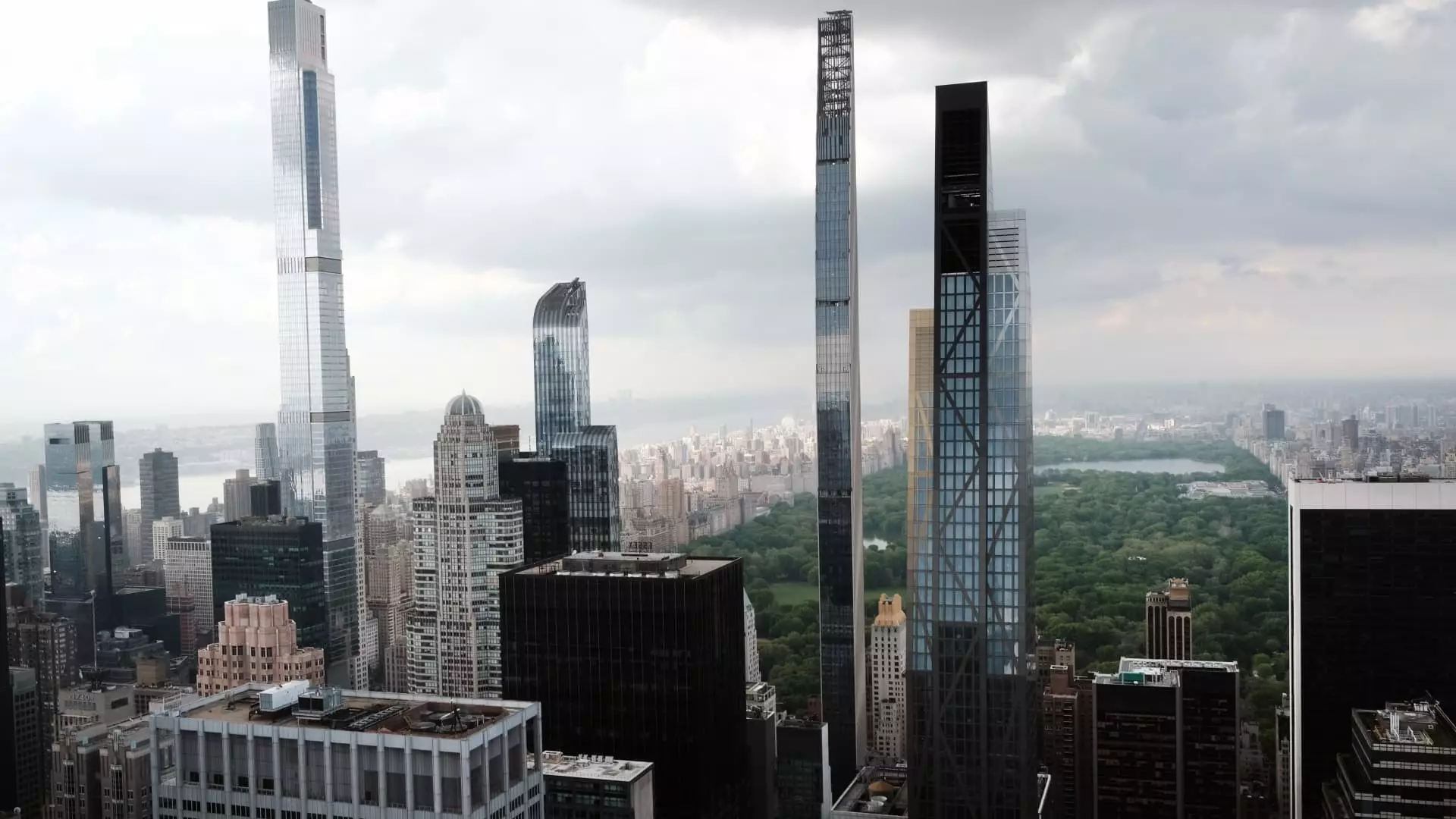In a landscape marked by relentless volatility in stock markets, Manhattan’s real estate sector is witnessing a remarkable renaissance, particularly at the luxury end. A staggering 29% uptick in apartment sales in the first quarter compared to the previous year underscores this phenomenon, which can be attributed to affluent individuals seeking refuge in tangible assets. With 2,560 closed sales accelerating the total value of property transactions to a colossal $5.7 billion—an impressive 56% increase—it’s evident that the ultra-wealthy are doubling down on real estate as a stabilizing investment amidst financial chaos.
High-net-worth individuals are strategically diversifying their portfolios. While traditional investments falter, the real estate market, especially high-end apartments priced over $5 million, has gained remarkable momentum, exhibiting a 49% increase year-over-year. This shift demonstrates an intriguing psychological trend: with uncertainty looming over stock performance, luxury buyers are gravitating toward the stability that real estate offers. Cash transactions dominate, with 58% of sales executed without mortgages, particularly prevalent among properties priced above $3 million, where an astounding 90% are all-cash deals. In many ways, this rush towards all-cash purchases illustrates the increasing financial fortitude of the wealthy, daring economic fluctuations to disrupt their buying patterns.
The Underperformance of the Mid-Market
Contrasting starkly with the boom in the luxury tier is the decline in the mid-market segment, which encompasses apartments priced between $1 million and $3 million. A 10% drop in signed contracts in this bracket indicates a challenging environment for middle-class buyers who are increasingly being squeezed out. This disparity raises crucial questions about the Manhattan real estate ecosystem: Is the city morphing into an exclusive domain only accessible to the super-rich? The answer may rest not merely on economic trends but on the evolving landscape of urban living, where wealth is increasingly concentrated at the top.
Encouragingly, properties in the lower price range, between $500,000 to $1 million, have shown relative strength. However, the lack of movement in the mid-market sector is concerning, reflecting broader socioeconomic divides that contrast sharply with booming luxury sales. This dichotomy signifies a need for a more balanced approach to urban development and housing policy, ensuring that Manhattan does not become a city solely for the affluent.
The Boomerang Wealth and Generational Shifts
One of the striking narratives emerging from this real estate surge is the phenomenon of “boomerang wealthy.” After moving to tax-friendly enclaves like Florida during the pandemic, many affluent individuals are now returning to Manhattan, which they see as a vibrant epicenter for both personal and professional reinvigoration. Their re-entry signifies a renewed confidence in the city’s allure, driven by the appeal of high-stakes workplaces and cultural vibrancy that only urban living can offer.
Interestingly, this movement is intricately linked to what is being dubbed the “great wealth transfer.” As trillions of dollars make their way from baby boomers to younger generations, a new wave of real estate buyers is entering the market using trust funds and family capital. The trend signifies not only a shift in buying power but also a change in investment mindset among millennials and Gen Z, who increasingly view real estate as a long-term legacy asset rather than just property.
The impact of family offices in this emerging landscape cannot be underestimated. Increasingly, these entities seek to invest in real estate to solidify wealth across generations. As such, it becomes essential for brokers and investors alike to adapt their strategies to cater to this evolving clientele and their unique financial philosophies.
Predicting Future Trends
While the first quarter’s sales figures depict a thriving Manhattan market, it is prudent to note that the transactions concluded represent decisions made months prior, often against a backdrop of greater economic uncertainty. As we look ahead, the sales data for March indicate robust momentum, particularly for high-end properties that continue to attract buyers. The tripling of signed contracts for apartments exceeding $10 million serves as a harbinger of sustained interest in luxury ventures.
Jonathan Miller, a notable figure in real estate analysis, acknowledges that despite the impressive sales figures, they slightly exceed the decade’s historical averages. Nonetheless, this signals a pivotal moment in the recovery trajectory of Manhattan’s market as it continues to allure the wealthy. The dynamism and resilience of the real estate sector, driven by distinctive buyer profiles and market psychology, encapsulate an urban landscape that remains ever-desirable despite broader economic challenges.
The emerging patterns indeed flirt with a sense of optimism, but it remains crucial for policymakers and city planners to nurture a balanced housing landscape that accommodates diverse socioeconomic strata, ensuring that New York City retains its identity as an inclusive urban haven.

